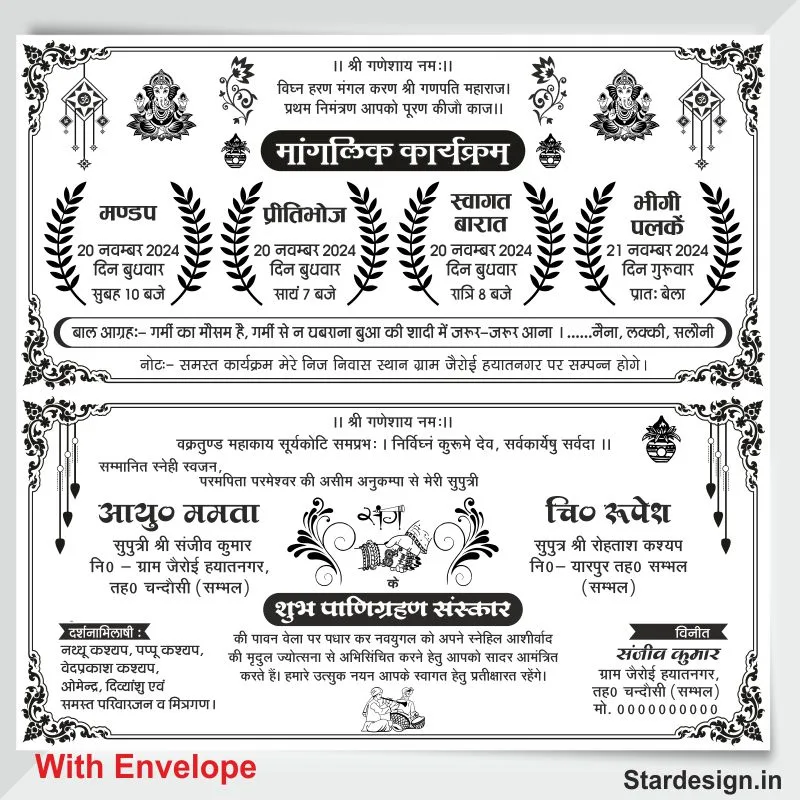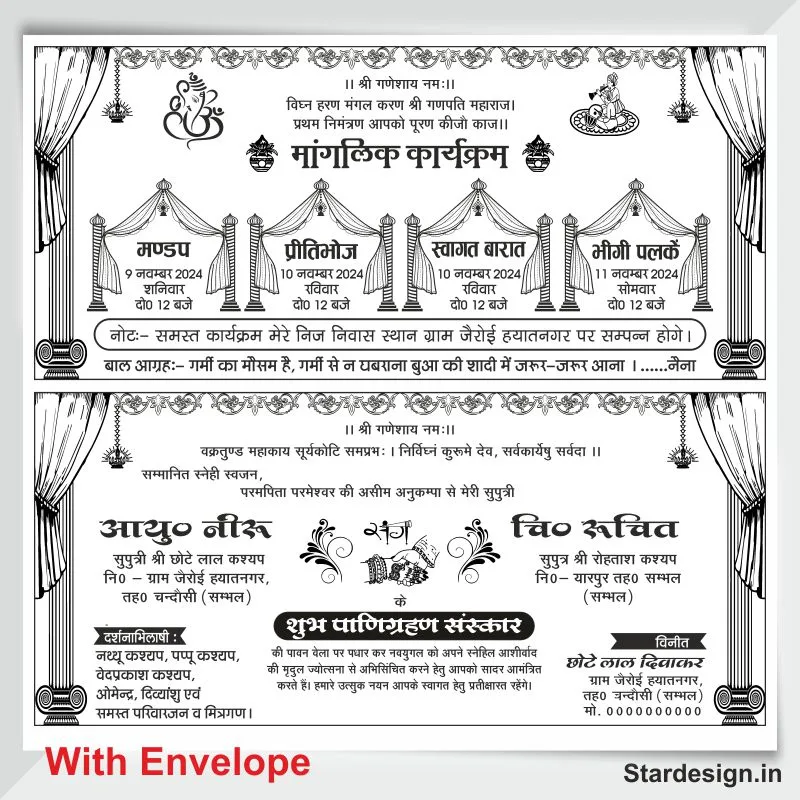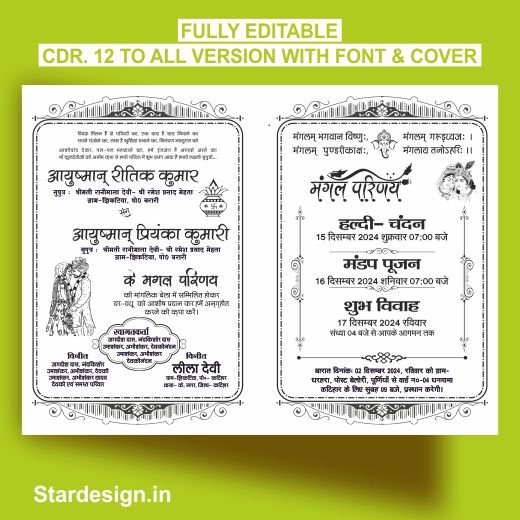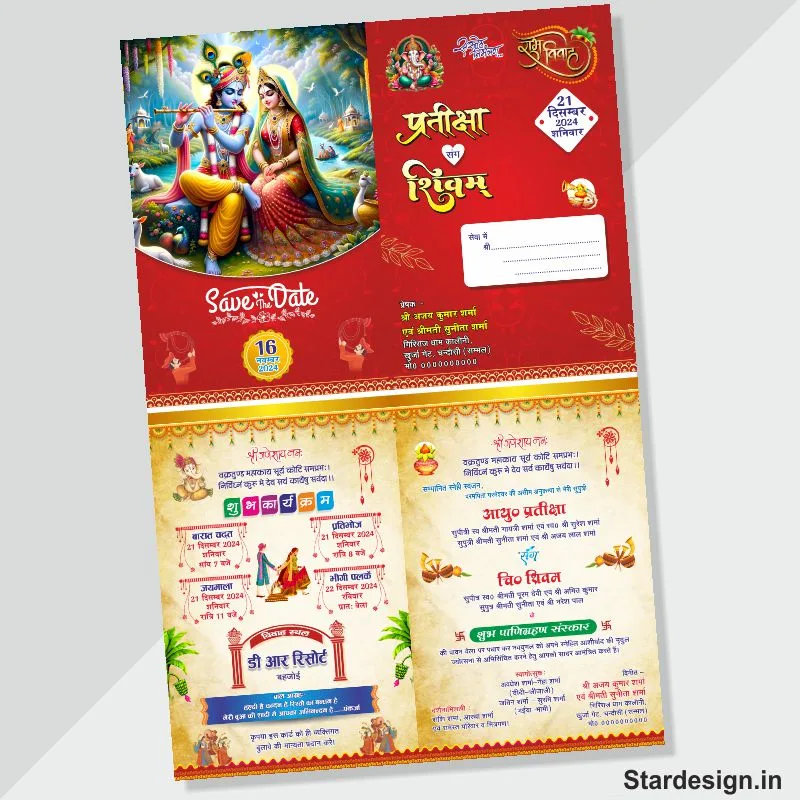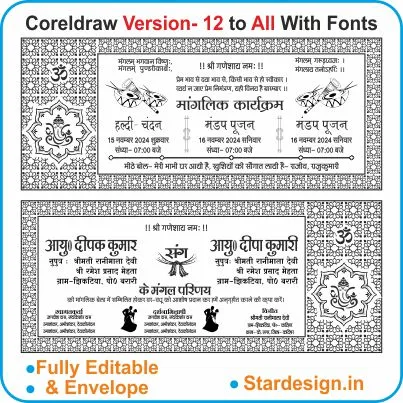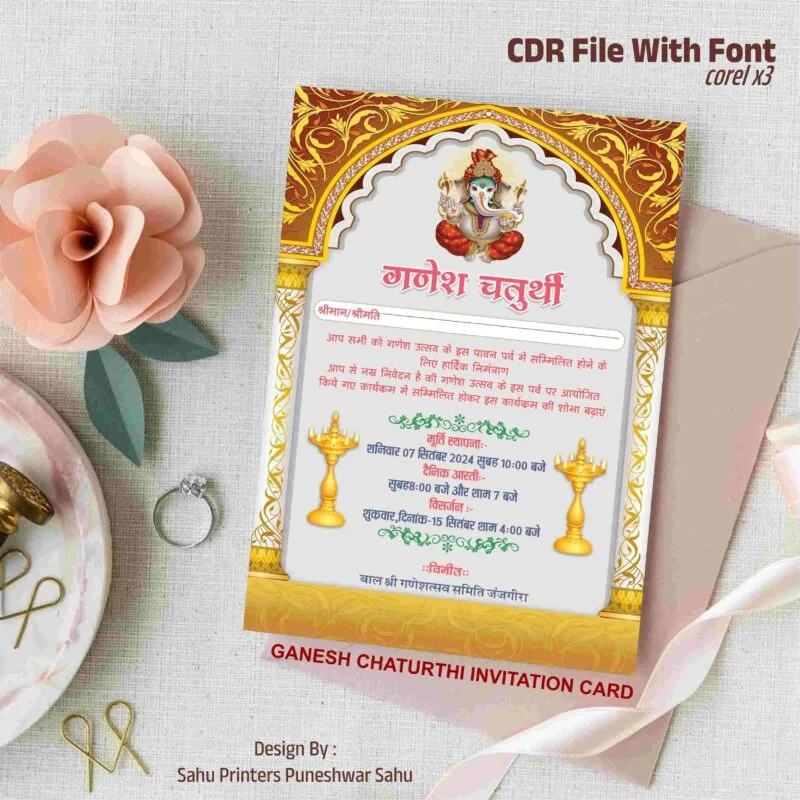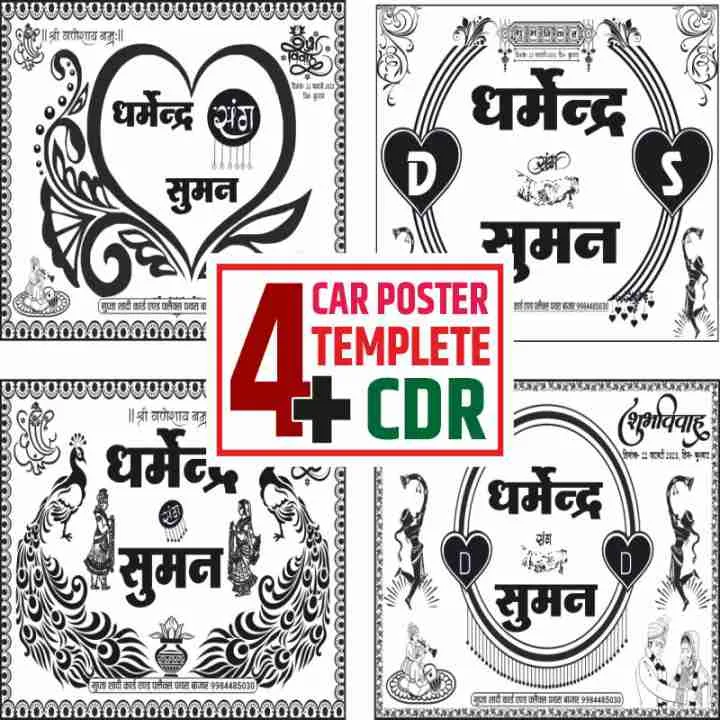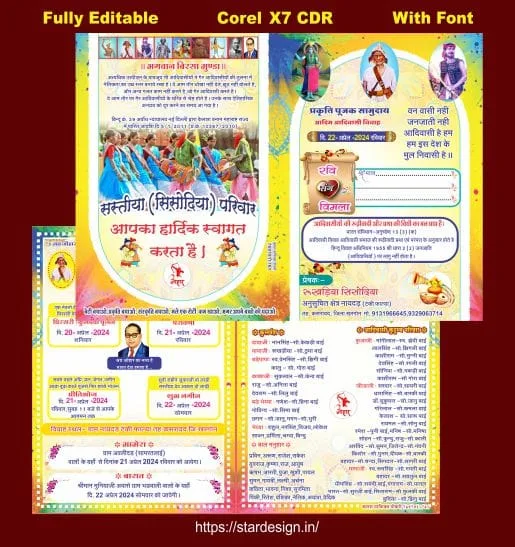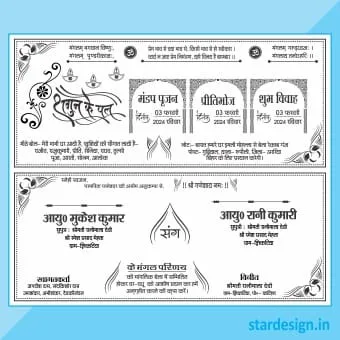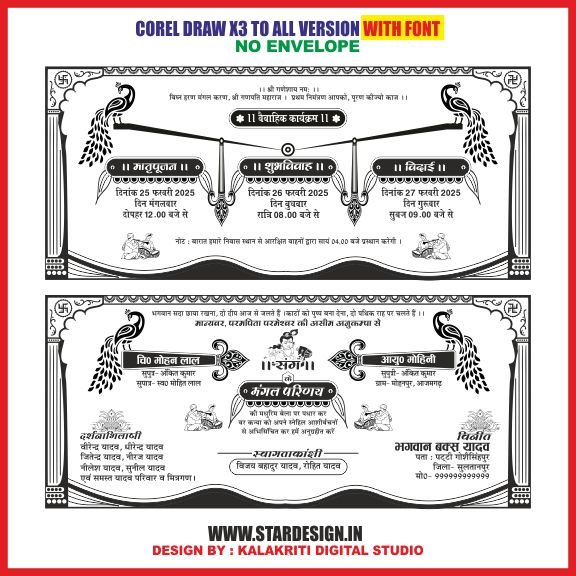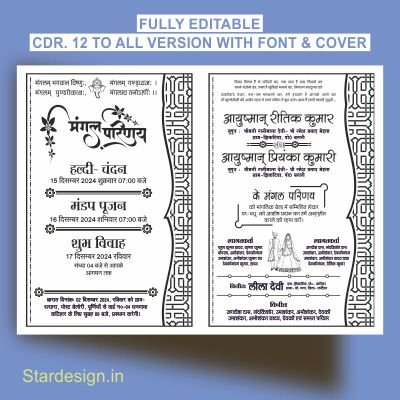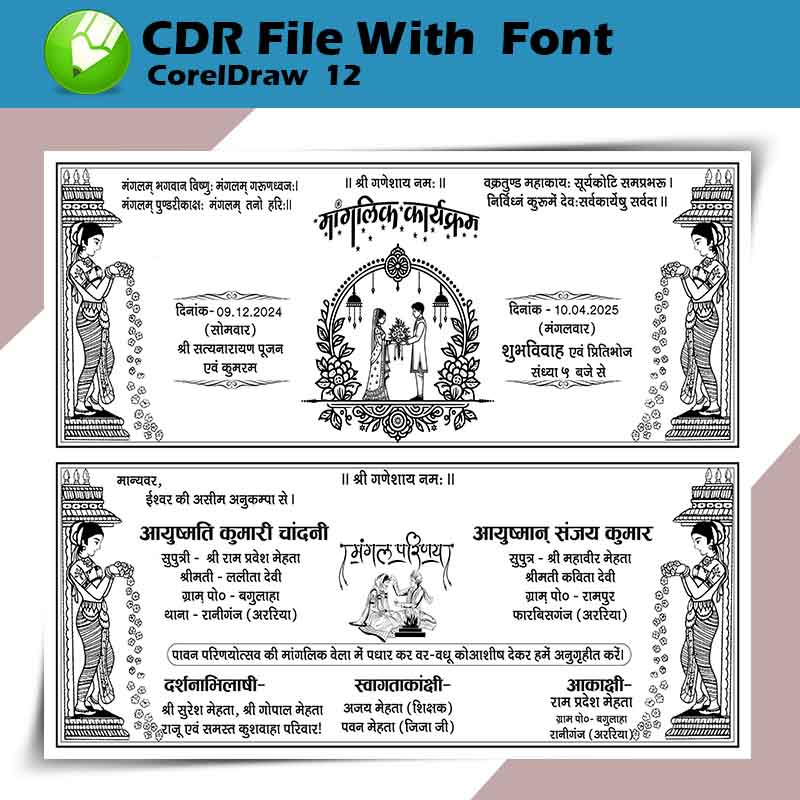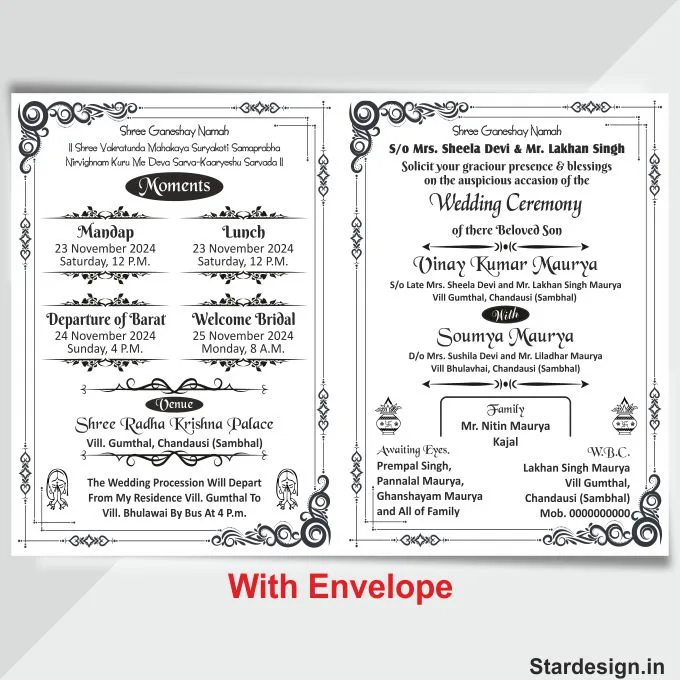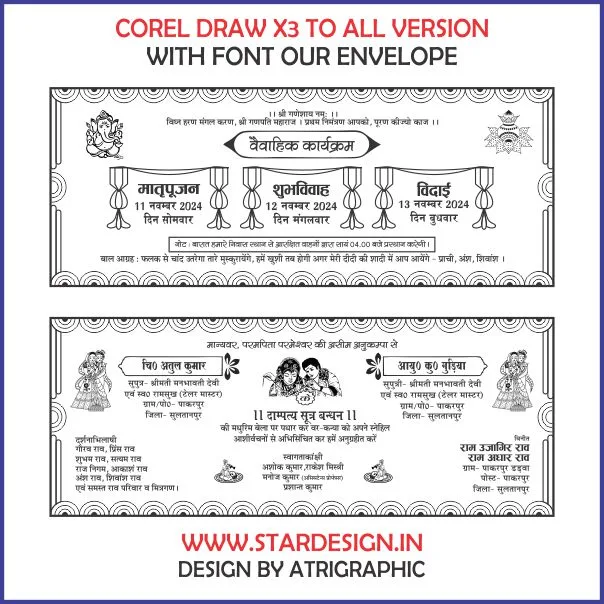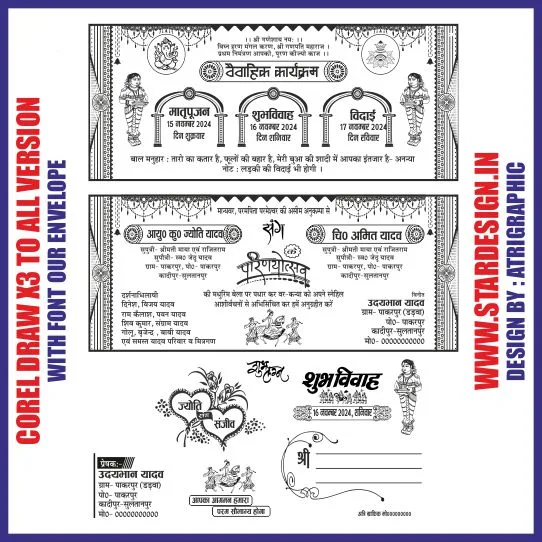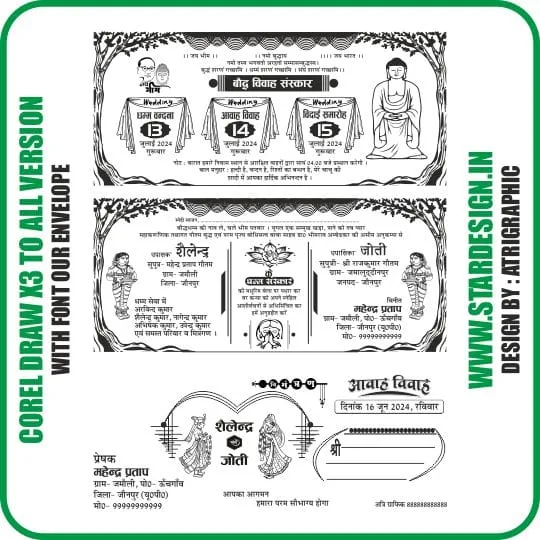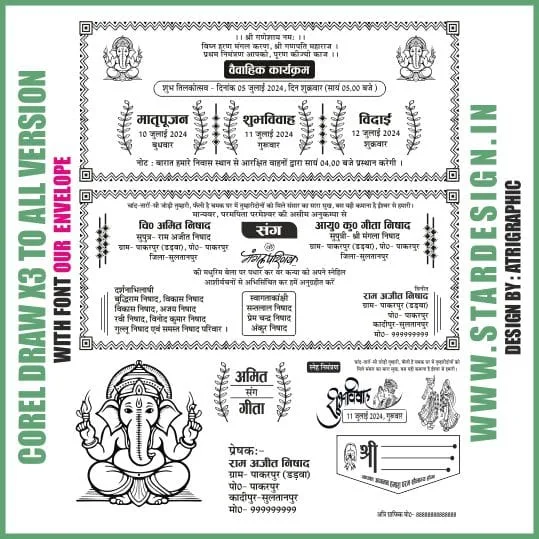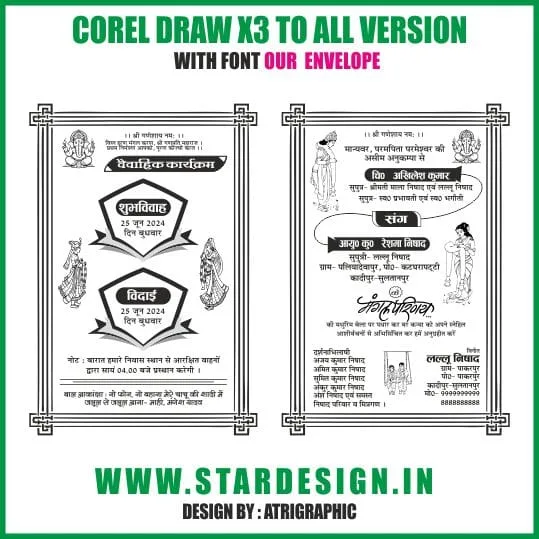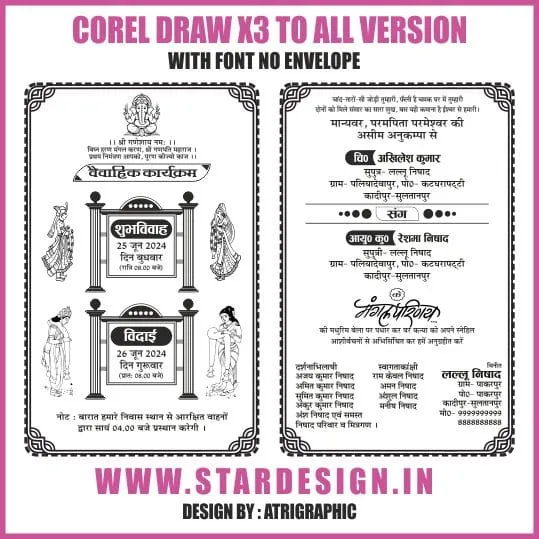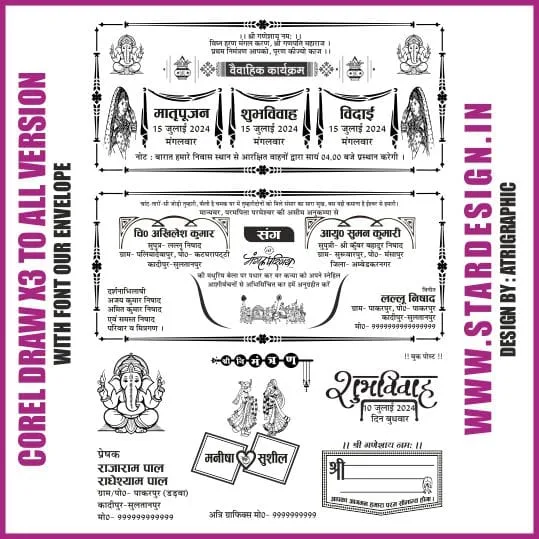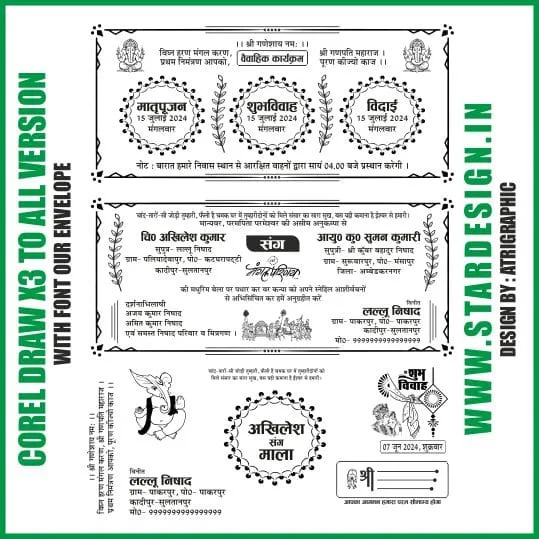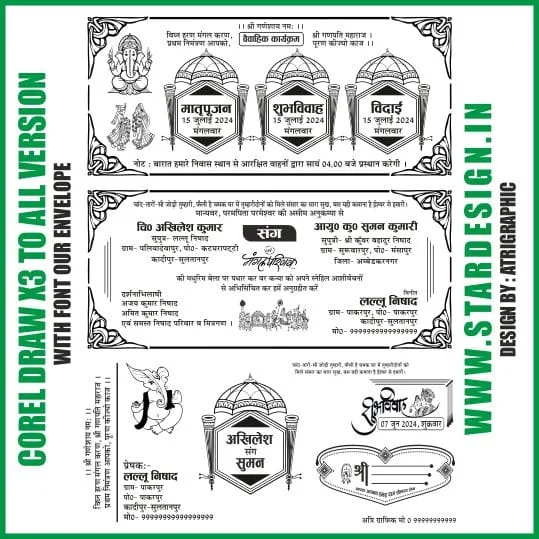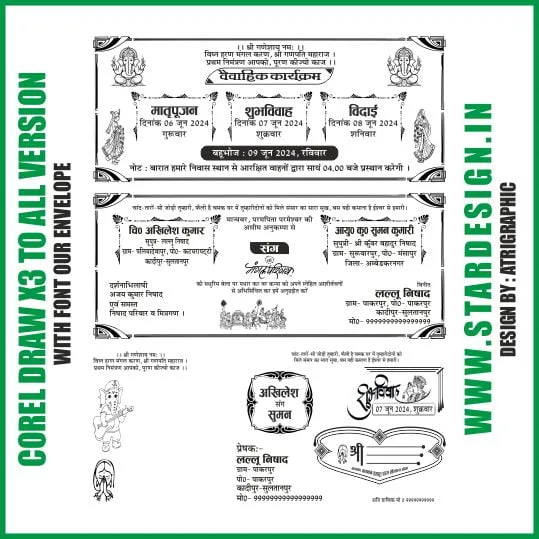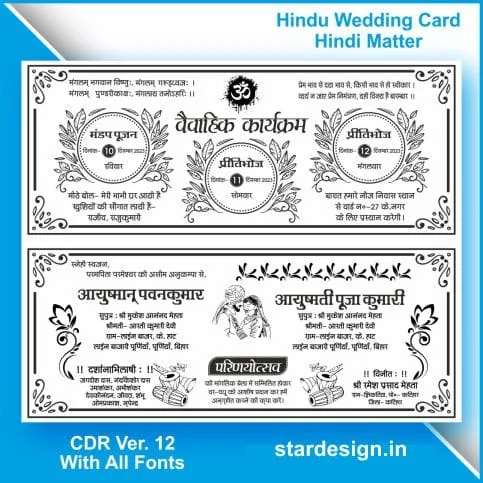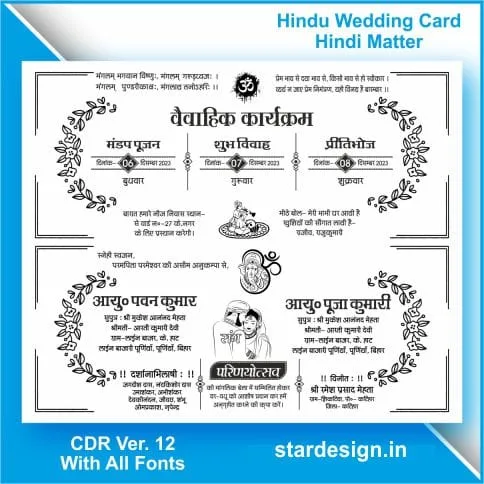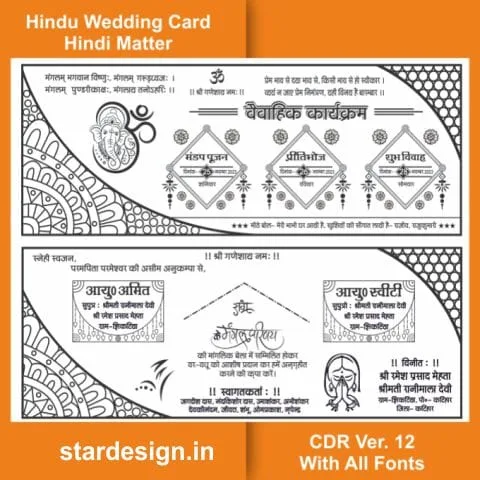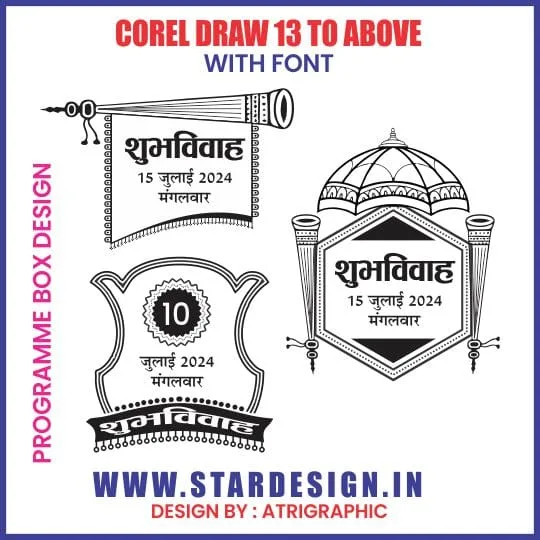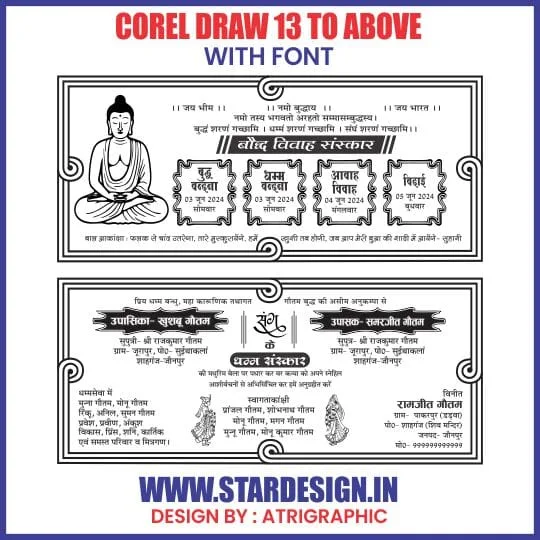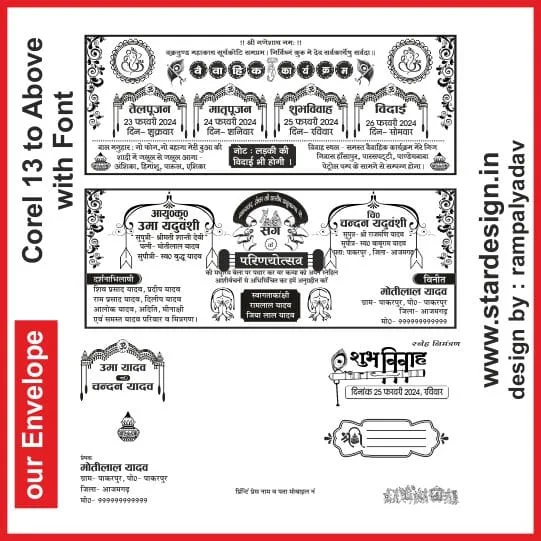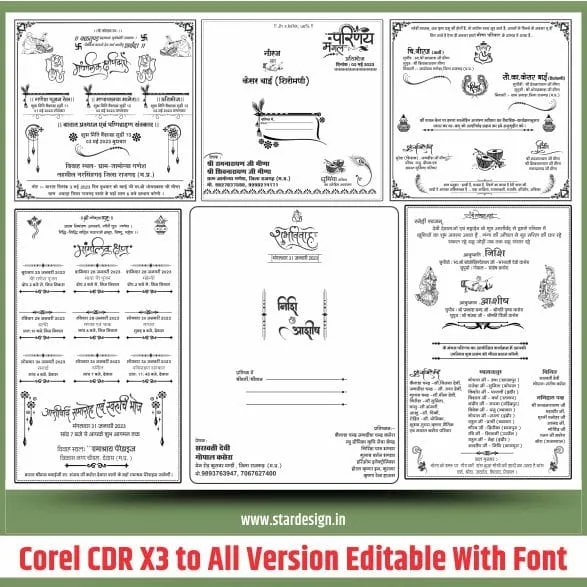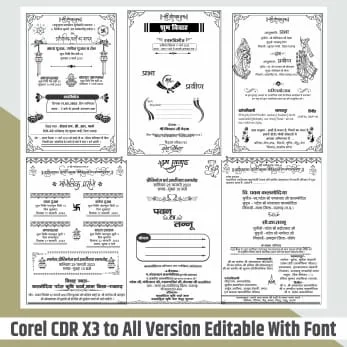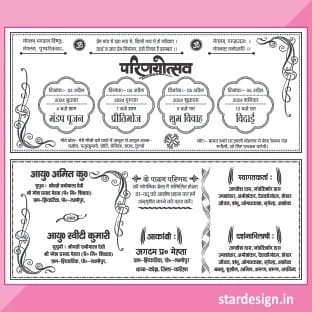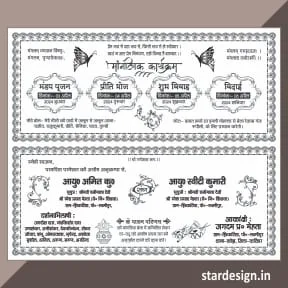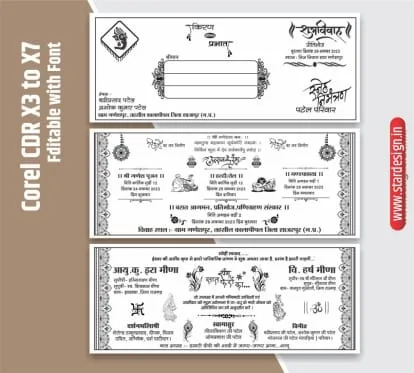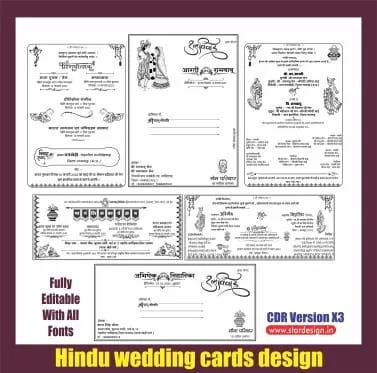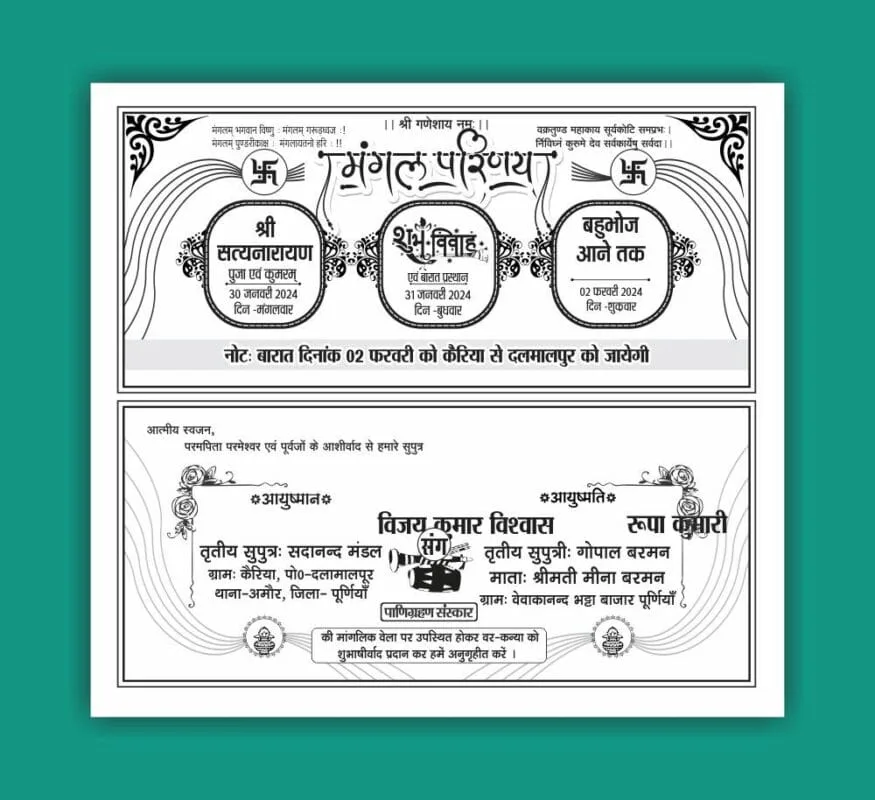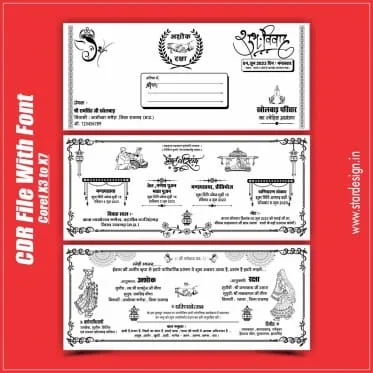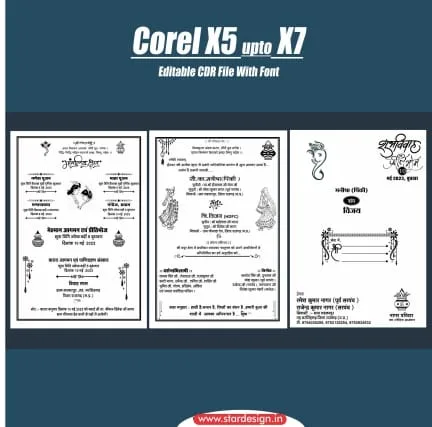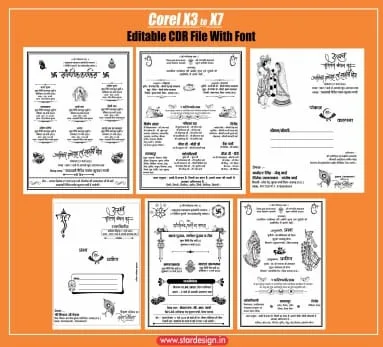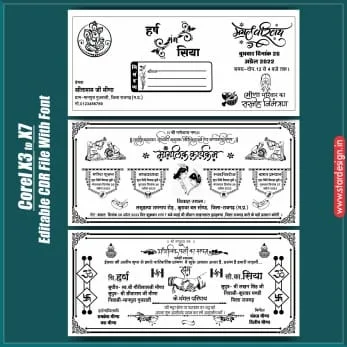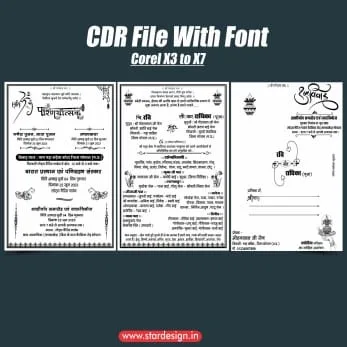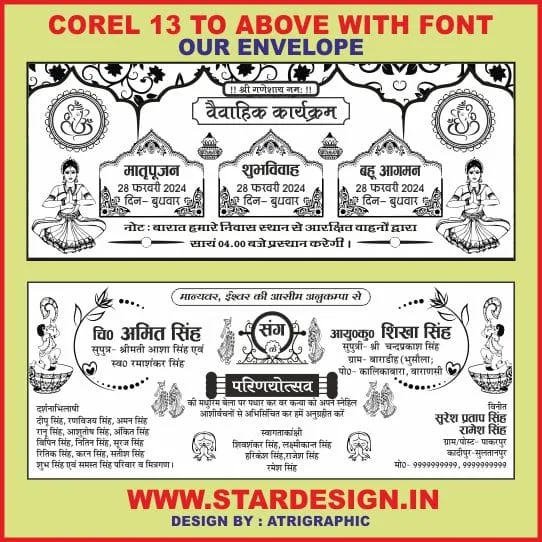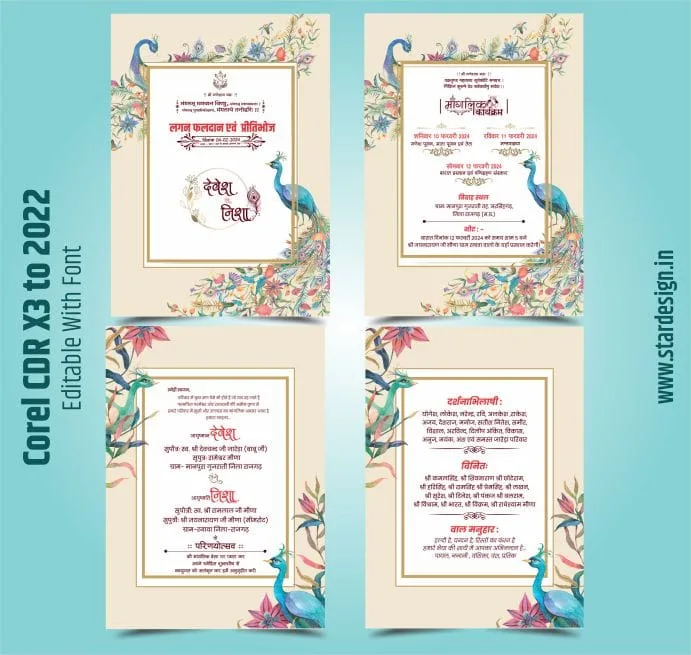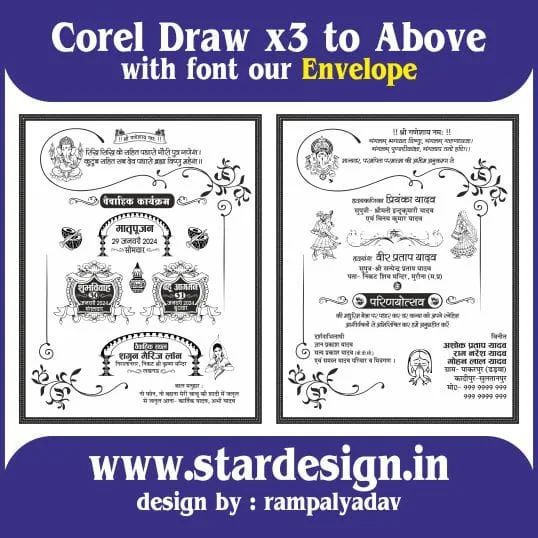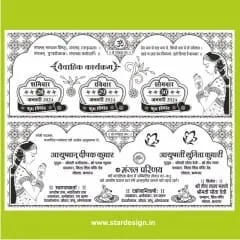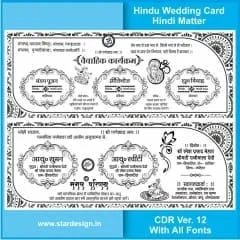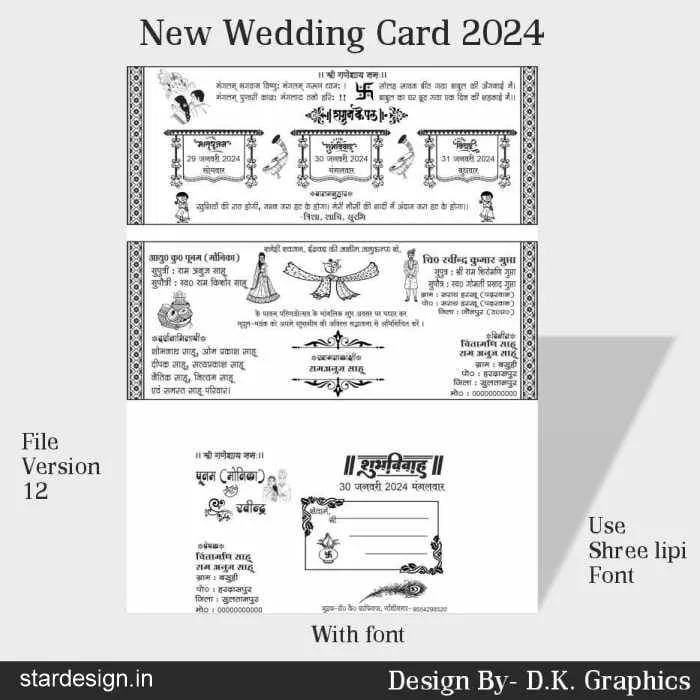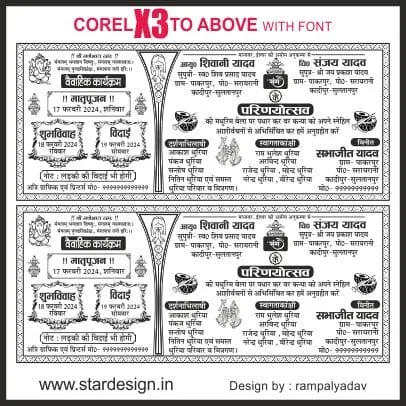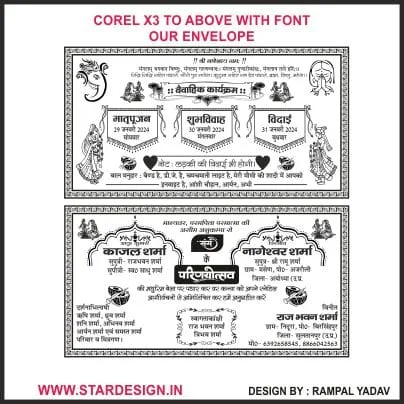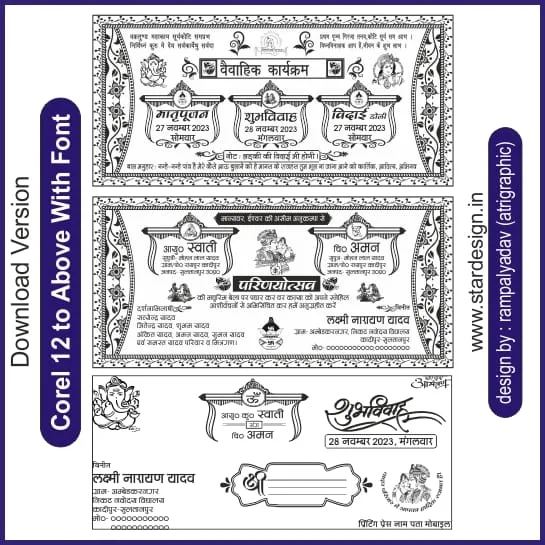Introduction to Hindu Wedding Invitations
Hindu wedding invitations hold substantial significance within the rich tapestry of Hindu culture. These invitations serve as the heralds of one of the most important milestones in a couple’s life, setting the tone for the celebrations that follow. Traditionally, Hindu weddings are grand affairs, rich in rituals and symbolism, and the invitation cards are a reflection of this vibrancy. They not only serve as a practical tool to inform guests of the details of the event but also as a medium that encapsulates the couple’s identity, heritage, and aspirations.
The design elements of Hindu wedding invitations play a crucial role in conveying the couple’s personality and style. Patterns, colors, and motifs used in these cards often draw inspiration from cultural symbols and regional influences. For instance, the use of vibrant colors like red and gold is prominent, as these hues are believed to signify prosperity and purity. Additionally, the inclusion of traditional symbols, such as the lotus or peacock, can express the couple’s devotion and bring blessings to the union. With the advancement in design technology, templates for Hindu wedding invitations, including CDR files, have become widely popular. These allow couples to customize their invites according to their personal preferences while ensuring adherence to cultural aesthetics.
Moreover, the invitation itself embodies a sense of welcome that extends beyond the physical card. It expresses warmth and encourages guests to partake in the joyous union. The art of crafting a compelling wedding invitation is not merely about aesthetics; it also requires an understanding of cultural nuances and values. Hence, to create an inviting and meaningful invitation, one must appreciate the delicate balance between traditional elements and contemporary design. With this understanding, couples can create an invitation that resonates well with their personal journey and appropriately honors their cultural roots.
Key Elements of Hindu Wedding Invitations
Hindu wedding invitations are significant components that set the tone for this monumental life event. They are more than just a means of informing guests; they reflect the couple’s cultural heritage and familial values. One essential element is the choice of language. Traditionally, Sanskrit and Hindi are often favored for their spiritual significance and cultural resonance. However, English has gained prominence, particularly among the younger generations. Including multiple languages can make the invitation more accessible, allowing non-Hindi speakers to participate in this cherished celebration.
Auspicious symbols also play a crucial role in Hindu wedding invitations. The swastika is one of the most prominent symbols, representing prosperity and good fortune. Its inclusion is believed to invite positive energy into the event. Similarly, the lotus flower symbolizes purity and beauty, often featured alongside other decorative elements. These symbols are not merely decorative; they hold deep spiritual meanings that resonate with the couple and their families, enhancing the cultural significance of the invitation.
Moreover, the specific texts contained within the invitation are key in conveying essential details. These usually include the wedding date, time, and venue, which are vital for ensuring that guests can attend. Additionally, family names of the bride and groom are typically included to honor both families, reflecting the emphasis on kinship within Hindu culture. The design should harmoniously integrate these textual elements with appropriate aesthetics, ensuring clarity and elegance. By thoughtfully combining these components, the invitation not only serves its functional purposes but also becomes a piece of art that embodies the joyous spirit of the upcoming wedding.
Trending Design Styles for Hindu Shadi Cards
Hindu wedding cards have evolved significantly over time, reflecting a fusion of tradition and modernity. Current trends in Hindu Shadi card designs encompass various styles that cater to diverse preferences. Among the most popular styles are traditional, modern, minimalist, and luxurious designs, each offering a unique aesthetic appeal.
Traditional Hindu wedding cards often feature intricate motifs, elaborate floral patterns, and symbols of auspicious significance. These cards are typically adorned with vibrant colors like red, gold, and green, resonating with the festive spirit of Hindu weddings. The use of calligraphy and ornate typography plays a vital role in enhancing the overall look, making these cards not just an invitation but a piece of art that narrates the couple’s heritage.
On the other hand, modern designs have redefined the landscape of Hindu Shadi cards. These cards often incorporate sleek lines, bold typography, and contemporary color palettes. The shift towards modernity includes the use of geometric patterns and abstract shapes, providing a fresh take while still honoring traditional aspects. Such designs typically appeal to younger generations who seek to combine their cultural roots with a modern flair.
Minimalist styles have also gained traction lately. The emphasis here is on simplicity and elegance, with a focus on negative space, subtle colors, and streamlined typography. This style is particularly attractive to couples who prefer a refined approach, highlighting their message without overwhelming their guests with excessive detail.
Lastly, luxurious Hindu Shadi cards are designed to impress. These cards feature high-quality materials, like embossed paper and gold foil accents, which exude opulence. Incorporating rich textures and 3D elements enhances their sophistication, catering to those intending to make a grand statement with their wedding invitation.
Incorporating these trending design styles ensures that Hindu Shadi cards not only serve their functional purpose but also become cherished keepsakes guests will remember long after the celebrations end.
Color Schemes and Their Meanings
Color plays a pivotal role in Hindu wedding invitations, not only as a visual element but also as a cultural symbol. Each color carries its own significance and can convey emotions and themes associated with the event. For instance, red is often viewed as a symbol of love and passion, making it a quintessential choice for bridal attire and wedding invitations. This vibrant color signifies auspiciousness and fertility, fitting seamlessly into the broader themes of togetherness and romance.
Another commonly used color is yellow, which represents knowledge, learning, and happiness. It evokes feelings of warmth and optimism, making it an ideal choice for celebrating a union. Yellow can often be seen alongside red in modern invitation designs, creating an eye-catching combination that signifies both joy and love.
Green is another color gaining popularity, symbolizing prosperity and growth. Incorporating this color into wedding cards is a beautiful way to express wishes for a bountiful future together. Often paired with gold, which represents wealth and success, this combination reflects the aspirational nature of marriage.
Blues and purples, while more unconventional, are used to evoke calm, spirituality, and serenity. These colors can create a sense of elegance and sophistication, appealing to couples seeking modern yet culturally resonant designs. Shades of turquoise, in particular, are becoming increasingly fashionable, blending tradition with contemporary aesthetics.
In summary, understanding the meanings behind color choices can greatly enhance the emotional resonance of Hindu wedding invitations. As couples explore various combinations, being mindful of these cultural significances can guide them toward a design that beautifully represents their love story and the auspicious journey they are embarking upon together.
Utilizing CDR File Templates for Customization
CorelDRAW (CDR) file templates have revolutionized the way wedding invitations are designed, especially in the context of Hindu weddings. These templates offer an incredible degree of flexibility and customization that allows users to create unique and personalized wedding cards. One of the major advantages of using CDR files is their compatibility with an array of graphic elements, letting users alter graphics, colors, and text to fit their specific preferences and themes.
The customization options available through CDR file templates enable users to incorporate cultural motifs, traditional designs, and distinct fonts that resonate with the essence of Hindu weddings. With just a few clicks, intricate designs can be modified to include specific symbols or elements that represent the couple’s cultural heritage and personality. This level of personalization ensures that the wedding invitation is not just a card, but a true reflection of the couple’s journey together.
Furthermore, CDR files allow for easy adjustments in layout, enabling users to experiment with different arrangements of text and graphics. This feature is particularly beneficial when trying to accommodate various lengths of text such as names, dates, and venue details. Users can also adjust the size of the invitation, tailoring it to their preferred dimensions, ensuring that each invitation meets their specifications.
In addition to aesthetics, using CDR file templates streamlines the design process, making it accessible for both seasoned designers and those who are less experienced. The intuitive interface of CorelDRAW allows individuals to experiment with various design elements without needing extensive design knowledge. Consequently, these templates serve as a valuable tool for creating stunning wedding invitations that can be cherished for years to come.
Where to Find Latest CDR Templates
In the quest for the latest Hindu wedding invitation CDR templates, one can explore various resources to obtain high-quality designs. Several reputable websites and graphic design platforms cater to individuals seeking attractive invitation templates that resonate with cultural aesthetics.
One of the most popular sources is Freepik, which offers a vast collection of graphics, including CDR templates specifically designed for wedding invitations. Users can search through a diverse range of styles, ensuring a template that suits various themes. Another notable platform is Creative Fabrica, where designers upload modern and traditional designs tailored for Hindu ceremonies. The subscription model encourages frequent updates, providing fresh options regularly.
For those who prefer a more personalized touch, Envato Market is an excellent marketplace where freelance designers sell their unique CDR templates. Here, users can find intricate designs crafted by talented artists worldwide, ensuring a one-of-a-kind invitation for any wedding. Furthermore, sites like Design Bundles offer affordable options along with occasional discounts, making it easier to acquire high-quality templates without straining the budget.
Social media platforms, particularly Pinterest, serve as valuable resources for inspiration and links to websites where CDR templates can be downloaded. By following relevant boards, users can discover trends and unique styles for Hindu wedding invitations. Additionally, engaging with specialized forums and graphic design communities can provide insights and recommendations on where to find the best templates.
Overall, the process of finding the latest Hindu wedding invitation CDR templates is enhanced by utilizing these diverse platforms. Exploring different websites and communities can lead to discovering exquisite designs that fulfill the requirements for any wedding ceremony.
Tips for Designing Stunning Wedding Invitations
Creating visually appealing wedding invitations using CDR templates requires a balance of creativity and functionality. The first step is to establish a harmonious arrangement of design elements. Consider employing a grid system that allows for consistent spacing and alignment. This approach ensures that each component, including images, text, and decorative elements, is thoughtfully organized, which helps maintain a clean and professional look. Utilizing CDR templates enables designers to manipulate these elements easily, providing flexibility to experiment with layouts.
Selecting complementary fonts is another vital aspect of invitation design. Aim for a combination of fonts that enhance readability while expressing the tone of the wedding. For instance, combining a decorative script font for names with a simple sans-serif font for the rest of the text can create an elegant contrast. It is recommended to limit the number of fonts to two or three to avoid visual clutter, ensuring that the text remains inviting and easy to read.
Readability is essential, especially when dealing with important information such as the venue and date of the wedding. Choosing adequate font sizes and colors that stand out against the background is crucial. High contrast between text and background improves legibility, making it easier for guests to absorb the details at a glance. Furthermore, the inclusion of adequate white space around the text can prevent the design from feeling congested, thus enhancing overall clarity.
Incorporating personal touches into the wedding invitation design can make the invitation truly unique. This can be achieved through the use of custom graphics, color schemes that reflect the couple’s personality, or even photographs that represent significant moments in their journey. These personal elements can serve as a focal point in the design, beckoning invitees to a more intimate experience.
Printing Options for Wedding Invitations
Choosing the right printing method for wedding invitations is crucial to achieving the desired aesthetic and ensuring quality. Among the various options available, digital printing has become one of the most popular choices. This method is known for its efficiency and cost-effectiveness. Digital printing allows for the production of high-quality images and vibrant colors, making it suitable for designs that include intricate details and photographs. Moreover, it is particularly beneficial for small to medium print runs, as it minimizes setup costs and can accommodate quick turnaround times.
On the other hand, letterpress printing offers a more traditional and tactile approach. This method involves pressing inked metal plates onto the paper, resulting in a debossed effect that can add a touch of elegance to wedding invitations. Due to its labor-intensive nature, letterpress is typically more expensive than digital printing; however, it is often favored for its distinctive texture and sophistication. This method is especially well-suited for thicker, high-quality paper, which contributes to the overall luxurious feel of the invitation.
Embossing is another technique worth exploring, which involves creating a raised design on the surface of the paper. This method can be combined with both digital and letterpress printing to enhance the visual appeal of wedding invitations. The embossed patterns not only add depth but also engage the sense of touch, offering a unique experience for recipients. Although embossing can be more costly, it is ideal for invitations that aim to make a lasting impression.
Ultimately, the choice of printing method should align with the couple’s budget, design preferences, and the invitation’s overall theme. While digital printing may be the most accessible option, letterpress and embossing provide an opportunity to create distinctive pieces that stand out among traditional designs.
Conclusion and Final Thoughts
In the realm of Hindu weddings, the invitation card serves as an essential component, transcending its basic function of informing guests. It embodies the couple’s personality and reflects the culturally rich heritage of the ceremony. Throughout this blog post, we have explored various aspects of Hindu Shadi fancy card design, highlighting not only the aesthetic appeal but also the emotional weight that these invitations carry. From traditional motifs to modern design elements, each card acts as a prelude to the celebration that awaits, creating anticipation among family and friends.
The design of wedding invitations can be an expression of one’s unique love story. Couples can choose from an array of templates, each presenting the opportunity to incorporate personal touches that resonate with their journey. By selecting a design that aligns with their tastes and cultural practices, couples can elevate their wedding invitations from mere paper to a cherished keepsake. The integration of symbols, colors, and forms that hold special significance to the couple can enhance not only the personalization but also the connection shared with their guests.
Furthermore, embracing the latest CDR file templates allows couples to explore a range of modern aesthetics while preserving traditional elements. Customization options enable the inclusion of personal elements such as favorite quotes or family insignia, making each card distinct and meaningful. The journey of crafting these invitations provides an opportunity for couples to collaborate and create something that truly reflects their relationship.
In summary, the significance of Hindu wedding invitations goes beyond their role in logistics; they are a vital first glimpse into the celebration of love and commitment. By thoughtfully selecting designs that resonate on a personal level, couples can ensure their invitations not only convey essential information but also capture the essence of their special day.
